Color Blocking For Hard Goods
Welcome to Retailing 101. This is a new series that Lawn & Garden Retailer and the University of Florida are bringing to those readers that are new to the business, are looking to start a new garden center business or just need to brush up on the basics of retailing. Each month will cover a different topic relating to garden center retailing and how it can help all of those new employees, managers or even owners. Enjoy!
Garden centers offer some of the most picturesque, aesthetically pleasing products in the retail industry. Americans would not have gardening as their favorite hobby if this was not the case. We are in the business of producing, selling and beautifying products. However, just by having exquisite plants and garden accessories (hard goods) that go along with them does not equate to instant profits.
In the retail world, the products that are bought and sold and the way they are promoted to the consumer is termed merchandising. In garden centers, this consists of buying, selling and promoting plants and hard goods. When the word “merchandising” is mentioned, many of you may cringe, and that’s okay. You may be able to grow and produce the most beautiful plants around, however, arranging and displaying them may be another matter. When you add hard goods to the mix, your head may start to spin. Rest assured you are not alone.
Merchandising is a tremendous challenge. Each garden center is different, and there’s no magic book out there specific to your space and limitations. However, with a few tips, you might feel less intimidated by merchandising and, hopefully, you will find ways to incorporate more hard goods within your garden center.
The Importance Of Displays
First off, displaying plant material on benches throughout the garden center is recommended as long as your store doesn’t rely on this merchandising technique entirely. That is how customers expect to buy plant material, so don’t reinvent the wheel when it comes to selling plants. However, when it comes to buying hard goods, customers are not trained to buy those items in the same fashion.
Unlike a flat of impatiens, hard goods are generally a more one-of-a-kind purchase. Walk into any department store and you are bound to see the more one-of-a-kind items arranged in displays rather than lined up in rows on tables. For the most part, a customer knows what to do with a flat of impatiens; however, that same customer might have a harder time envisioning gardening accessories in or around the home. That is where the use of displays comes in.
Setting up a vignette on an end cap or in a section that recreates a part of a home shows customers how to use garden accessories and plants. This will make the sale easier for your customers, as they can relate the display back to their landscapes. With this approach, you eliminate some of the thinking process that goes into purchasing products, and the less customers have to think about how it will look at home, the more likely they will make purchases. This is also known as worry-free buying.
Merchandising Basics
Whether you are merchandising your product mix on benches or using displays, it is important to have a merchandising system in place. Once your system is set up and kept restocked on a regular basis, the product should, hopefully, sell itself. You’ll know if it is the right location for the product depending on your turnover rate. If it is slow-moving inventory, it is considered inventory that has had some movement but less than 11_2 turns per year. Keep working with your existing products to find the right fit in your store. Don’t immediately sum up the products as bad purchasing decisions and put them on sale. Try moving a rack of tools closer to the mulch and soil or add a display of gloves by the cash registers that could encourage impulse buying.
Implementing a merchandising system that is consistently restocked and neat will also draw customers through your store. This creates ease of shopping. Think of a grocery store: If the bread aisle moved every week to a different location, imagine how frustrated shoppers would get.
It’s great to change around key displays or incorporate new products into displays, however, don’t keep rearranging the whole store for your customers. Consistency is not only a relief for your customers but also a lot easier on your employees. When it comes to restocking or reordering, it is easy to see the holes that need to be filled. Also, when new products arrive, they will be easy to match up on displays with similar products.
The Tried And True
Now that you have the basics down on merchandising, how about trying a surefire display technique? You may have several ideas about rearranging things and trying new displays, however, start by focusing on just one area or one product. A key area to address is the pottery section. Pottery has become a huge trend. This goes hand in hand with the popularity of container gardening. With real estate prices on the rise in the United States, Americans are acquiring smaller plots. This, in turn, makes less room for in-ground gardens and increases the use of container gardens.
Now think about your pottery section. Are your pots scattered around the store? Are they in displays? Are they just sitting on a shelf or all of the above? Even if you have a great pottery section, these ideas might make the section even more profitable.
Selection. Before starting to display the pottery, first you need to decide on the selection. There are lots of containers to choose from. As garden and landscape shows are approaching, there are a few things to keep in mind when choosing your pottery selection:
- Select the appropriate price points according to your customer mix.
- Have a combination of terra cotta, ceramic glazed, lightweight materials, plastic and metal.
- Consider buying bright colors for the spring/summer and jeweled toned colors for the fall.
- Choose vendors according to quality (check for ease of chipping), price (make sure you can keep your margins up even after freight) and how fast they ship reorders in-season (reliable vendors keep your back stock to a minimum).
Display. When displaying your pottery, the best method is to have some of the pieces featured in vignettes in every department around the store and then have a main section where a majority of the pottery is featured. The most attractive container displays that really draw the customer’s eye are the ones that feature color blocking. This can be done in both vignettes and on shelving displays.
For vignettes around the store, dedicate each one with a color theme and only feature garden accessories (i.e., pottery, fountains and birdbaths) along with plants in that specific color. Remember, these key displays are not permanent and should change throughout the season. The main pottery display should remain color blocked to entice customer purchases. This provides options to fit a customer’s décor. This can be done by dedicating a vertical shelf section to one color or each shelf to a color; it all depends on the amount of space available.
No matter how much space you have for your pottery section, this merchandising display design helps organize the pottery, it is easy for the customer to shop and it is convenient to restock and add items, too. For more reassurance that color blocking works, take note next time you walk through a department store and see if products that are color blocked catch your eye. If it grabs your attention, it will more than likely grab the attention of your customers.

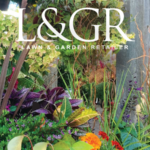
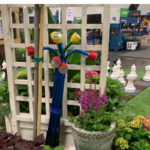

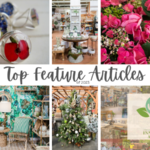

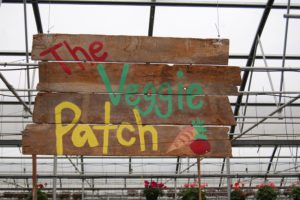
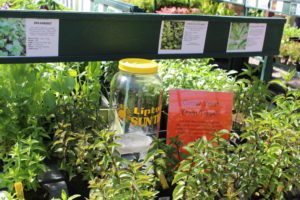

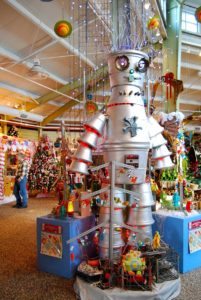
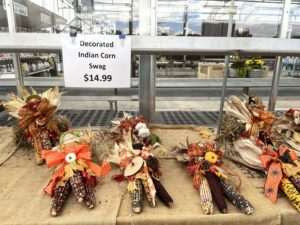


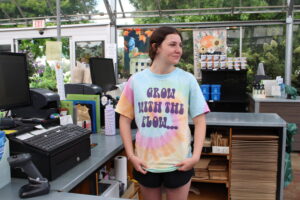

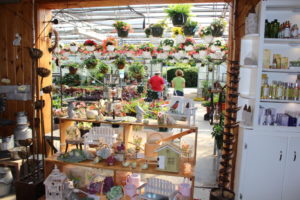
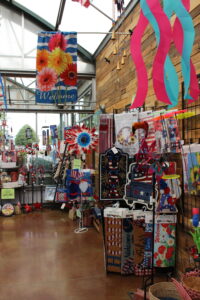
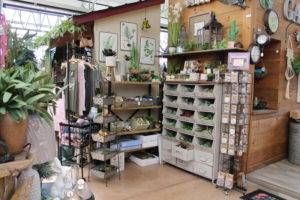
 Videos
Videos





